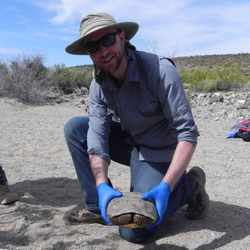Comparing the selective landscape of TLR7 and TLR8 across primates reveals unique sites under positive selection in Alouatta
 Authors:
Authors:
Nicole S.Torosin, Hernan Argibay, Timothy H. Webster, Patrice Showers Corneli, Leslie A. Knapp
Abstract:
Among primates, susceptibility to yellow fever (YFV), a single-stranded (ss) RNA virus, ranges from complete resistance to high susceptibility. Howler monkeys (genus Alouatta) are the most susceptible to YFV. In order to identify Alouatta-specific genetic factors that may be responsible for their susceptibility, we collected skin samples from howler monkey museum specimens of the species A. caraya and A. guariba clamitans. We compared the rate of nonsynonymous to synonymous () changes of Toll-like receptor (TLR) 7 and TLR8, the two genes responsible for detecting all ssRNA viruses, across the Primate order. Overall, we found that the TLR7 gene is under stronger purifying selection in howler monkeys compared to other New World and Old World primates, but TLR8 is under the same selective pressure. When we evaluated at each codon, we found six codons under positive selection in Alouatta TLR8 and two codons under positive selection in TLR7. The changes in TLR7 are unique to A. guariba clamitans and are found in functionally important regions likely to affect detection of ssRNA viruses by TLR7/TLR8, as well as downstream signaling. These amino acid differences in A. guariba clamitans may play a role in YFV susceptibility. These results have implications for identifying genetic factors affecting YFV susceptibility in primates.
This publication can be viewed here
